Ryan Hall's Blog, page 375
July 28, 2015
Q&A with Sarah Attar
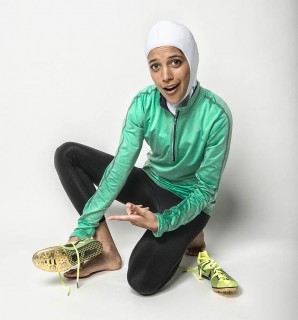
Photo: Scott Draper
Three years ago, Sarah Attar, now 22, competed in the 800 meters at the London Olympics. She finished dead last in her preliminary heat, dressed in a uniform that required covered hair, long sleeves and pants consistent with female Islamic dress codes, but the crowds rose to a standing ovation for her efforts. The San Diego native with dual American and Saudi Arabian citizenship made history that day as part of Saudi Arabia’s first female delegation of Olympic athletes. Now the former Pepperdine University cross-country runner continues to inspire, having recently signed a sponsorship with the apparel brand Oiselle and appearing on a banner along this year’s Boston Marathon course, which she ran for the third time with a new marathon PR of 3:18:37.
What difference do you think your Olympic appearance made?
Just visiting Saudi Arabia recently and talking to girls there, they tell me how much I inspire them. So, even if it’s still just steps toward getting more women’s gyms or running events or anything like that to evolve—that there are now girls who dream of competing in the Olympics is pretty amazing.
What was it like racing with the wardrobe requirements specified by Saudi Arabia?
My mom and I put together that outfit, and the main thing that was different was the full headpiece. I don’t typically train in a hijab, but it honestly wasn’t a big deal to me going into the stadium racing. It was like wearing any uniform you would wear as part of a team. So that’s just how I see it.
How was the race received in Saudi Arabia?
It was televised, but some stations didn’t show it, which speaks to how it was controversial. Some people weren’t happy that I was running in the Olympics and representing Saudi Arabia, but overall it was received pretty well and over time became more accepted.
What distances did you typically run in college?
I did cross country mainly, which is usually 6K. Then my sophomore year, which was the year prior to the Olympics, I trained for the Big Sur Marathon that April. So I didn’t really do track very much. I did a couple races, but it was the 3,000, and I’d only raced the 800 once in high school.
So, why run the 800m at the Olympics?
Just my speculation on it, but it was selected more to get me in the stadium and have the experience with the crowd. I still wouldn’t have qualified at longer distances, so I think the 800 saved me from being lapped a bunch like in the 10,000.
Along the Boston Marathon route this year your photo is featured on one of the banners, how did that come about?
Honestly, I have no idea how it came about. I got an email saying I was a finalist for one of the banners and thought it was the coolest thing ever. We were saying if I wasn’t racing Boston this year we’d still have to fly out just to see all the banners around the city. So it’s a good thing I ran.
What’s your favorite run?
I do love Big Sur. I mean that’s what initially drew me there, the landscape. I’ve also always been very visual and I studied art so I’ve always been inspired by nature and that’s just fed my running.
Why do you run?
It allows me to connect with people and have opportunities I never would have imagined for myself. It pushes us past what we think we’re capable of.
Will you run in the 2016 Olympics?
It’s up in the air. I don’t know what’s happening. In my opinion, [Saudi Arabia] should have women representing them, obviously. And if I was invited again, it would be awesome to do.
RELATED: Q&A With Lauren Fleshman
The post Q&A with Sarah Attar appeared first on Competitor.com.
Solving The Mystery of Side Stitches In Runners

Photo: Shutterstock.com
When I was in high school, I would often find myself in the middle of a run suddenly so debilitated by pain in my lower side that I’d simply end up walking home or seeking refuge in a local gas station to wait it out. Eventually, the pain—a side stitch—would pass. Over time, it passed so entirely I haven’t been bothered by one in years.
But I am not alone in being temporarily crippled by the side stitch—or in having it disappear without explanation. Studies have found that nearly 70 percent of runners will get a side stitch in a given year, and swimmers and horseback riders see similarly high rates. Yet the causes of the ailment, as well as treatments for it, are still relatively mysterious.
“It just shows up when it wants to show up,” says Dr. AJ Gregg, head of Hypo2 High Performance Sport Center in Arizona. Gregg has treated a number of elite athletes for side-stitch pain.
Like many runners afflicted with these unexplained pains, I concocted my own theories: It’s all about breathing patterns. You simply need to get in better shape. Is it just me, or do side stitches seem to come on when I change running speeds back and forth?
“It is just you,” says Dr. Darren Morton, a senior lecturer at Avondale College in Australia.
Morton is the leading—and, in many ways, the only—researcher on side stitches, which are academically referred to as “exercised-induced temporary abdominal pain,” or ETAP for short.
One of the main reasons that Morton could be considered the only major researcher in the field is that there simply hasn’t been that much research done on side stitches, or ETAP. Most runners who are bothered by a side stitch would never visit a doctor for the problem.
“It’s more of a nuisance in a lot of cases, than life-threatening,” explains Gregg.
Side stitches have also been hard to study because of their transient nature and lack of definition. What exactly constitutes ETAP? Some people get the pain in their side. Some get it more toward the middle of the abdomen. Some are high in the abs; some are low. Many people also confuse side stitches and cramps, though those two things are very different.
RELATED: Got Cramps? Here’s How To Stop Them
The lack of research has led to wild speculation. But many of those theories, largely based on anecdotal evidence, are now being disproven.
For years, it was theorized that side-stitch pain was related to stress of the diaphragm muscles. But studies have found that ETAP occurs even in activities with low respiratory demands on the diaphragm and having a side stitch doesn’t result in limited lung capacity. Other theories suggested that side stitches were connected to gastrointestinal distress or to stress on the ligaments around the stomach and liver. The current operating theory, though, is that these stitches are caused by irritation of the parietal peritoneum, according to Morton.
“We have not proved what causes stitches but I am 99 percent confident that it is the parietal peritoneum,” he contends.
Think of the parietal peritoneum as a membrane corset that wraps around the center of your body and abdomen, says Gregg. As you fatigue and your body breaks down, your core muscles fatigue and your back muscles over-engage. The muscles in the back directly press on nerves that are felt in your abdomen and side (and sometimes even in your shoulder tip). The result is that irritating pain in your side.
What is also becoming more clear is that the side stitch does not necessarily discriminate based on ability—elite runners just might be more equipped at dealing with the pain and be more thorough about eliminating potential risk factors. Olympic bronze medalist Deena Kastor even reported struggling with a side stitch during the Rock n’ Roll Philadelphia Half Marathon last September— a race in which she shattered the Masters half-marathon world record. About 2-5 percent of the athletes who come into Gregg’s office are there because of side-stitch pain, and most of those seeking help are elite runners.
But the fact that Deena Kastor might be getting the same pain you get doesn’t do much good when you’re crippled in the middle of a race, especially since there’s no known immediate solution.
“There does not seem to be any consistent method for relieving them other than to stop exercise,” says Morton.
It’s like the old and annoying joke:
— “Doctor it hurts when I do this.”
— “Well, have you tried not doing that?”
In the middle of a race, that is not what you want to hear, nor is it helpful advice.
RELATED: How To Beat Marathon Muscle Cramps
Gregg works on trouble-shooting with athletes to figure out what helps them with the pain or why they might be predisposed to it. “It can take a little trial and error,” he says.
Eating and drinking large amounts within the two hours before running has been correlated with some side-stitch pain, so Gregg always starts by advising athletes to eat a little further out from their workout. And, if athletes have reactions to specific foods, then that’s also something to rule out.
Practicing deep breathing exercises, slowing down your breathing or adopting a deep and rhythmic breathing pattern has been found to sometimes help relieve side stitches. While side stitches are no longer believed to be originating in the diaphragm, these things can still help relieve the stress on the muscles across your back and abs.
Once a side stitch strikes, many runners also subscribe to the method of grabbing their side where it hurts. This has shown some success, partially because it works in a similar way to a core stabilizer or belt, and holds the muscles in place. Stretching the affected side or bending forward can also help relieve the muscles in the back that are pushing on the nerve that’s causing the pain.
These are all classic treatments that Gregg often recommends an athlete try, but when it comes to proof in the form of quantifiable results from research, he admits, “I have no idea if it actually helps.”
If the theory of parietal peritoneum irritation is accurate, then the best thing to prevent side stitches is to strengthen your core muscles so they don’t break down as you fatigue, or to focus on activating and engaging those core muscles when running. Gregg will sometimes suggests an athlete take an anti-inflammatory in advance to help relieve potential nerve irritation.
As a last resort, you could just wait a few years. Side stitches have been found to be very common among teens, but far less common as you age—theoretically because the surface area of the peritoneum is proportionally larger in teenagers. See, getting older does have its perks.
RELATED: Dealing With Injuries That Aren’t Really Injuries
The post Solving The Mystery of Side Stitches In Runners appeared first on Competitor.com.
Tech Meets Training

How two top endurance athletes use technology to maximize their training efforts.
Episode one of GU TV features host and pro cyclist Yuri Hauswald, interviewing running athlete Pam Kennedy about how they each incorporate technology in their training efforts.
The post Tech Meets Training appeared first on Competitor.com.
July 27, 2015
Improve Your Running Form With Clapping A-Skips
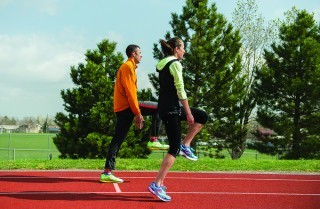
Photo: Liz Copan
This easy (and fun!) drill will help improve your running mechanics.
Why?
A-Skips with a clap help you to run “tall” with an erect posture while developing lower-leg strength, encouraging knee lift and promoting an efficient mid-foot strike.
How?
Skip forward, lifting your lead knee to waist-height while keeping your back leg straight as you come off your toe. As you lift your knee, bring both hands underneath your hamstring and gently clap them together. Continue moving forward in this manner, striking the ground with your mid-foot or forefoot and clapping underneath your raised leg. Perform two 30-meter reps, progressing to 50-meter reps once you build strength and coordination.
When?
Do this drill as part of your warm-up routine before speed workouts and races, or as part of a comprehensive drill routine after 2-3 of your easy runs during the week.
RELATED:
— Essential Form Drills for Speed and Efficiency
— 3 Video: 3 Drills For A Better Running Stride
The post Improve Your Running Form With Clapping A-Skips appeared first on Competitor.com.
November 3, 2013
Priscah Jeptoo Wins New York City Marathon
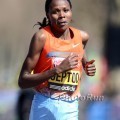
Priscah Jeptoo, shown here at April's London Marathon, was the big winner this morning in New York. Photo: PhotoRun.net
Ethiopian Buzunesh Deba is runner-up for the second time in a row.
Closing what seemed to be an impossible gap, Kenyan Priscah Jeptoo came from behind to win Sunday’s ING New York City Marathon in 2 hours, 25 minutes and 7 seconds. With her victory, Jeptoo, who won London in April, also captured the World Marathon Majors championship and the $500,000 prize that goes with it. Ethiopian Buzunesh Deba, who took the lead from the start and ran in front for most of the race, finished second here for the second time in a row, running 2:25:56. Jelena Prokopcuka took third in 2:27:47.
RELATED: Geoffrey Mutai Wins Second NYC Marathon
MORE: 2013 New York City Marathon Coverage
Adriana Nelson of Boulder, Colo., the reigning U.S. half-marathon champion, was the top American finisher in 13th, running 2:35:05.
Stay tuned to Competitor.com’s complete coverage page throughout the day for updates, quotes, photos and more from the ING New York City Marathon!
The post Priscah Jeptoo Wins New York City Marathon appeared first on Competitor Running.
Geoffrey Mutai Captures Second New York City Marathon Title

Geoffrey Mutai is cementing his legacy as one of the greatest marathoners of all-time. Photo: PhotoRun.net
The 32-year-old Kenyan put the race away over the final 10K to win in 2:08:24.
NEW YORK — In the opening 10 kilometers of the ING New York City Marathon on Sunday morning, reigning champion Geoffrey Mutai of Kenya appeared as if he was chomping at the bit to surge into the lead. With 7K to go, he really started to put the bite down.
Cranking down the pace just past mile 21 to split up a lead pack of 8 runners, Mutai put himself into a two-man battle with countryman Stanley Biwott by 35K, but the duel didn’t last long. Mutai continued to step on the gas in Central Park, extending his advantage all the way to the finish line to break the tape in 2 hours, 8 minutes and 24 seconds and capture his second ING New York City Marathon title.
MORE: 2013 New York City Marathon Coverage
“Today it was a very tough race,” Mutai said after the race. “The first time here is easy. To defend your title is not easy. Today it was a very tough wind.”
Tsegaye Kebede of Ethiopia ran strong over the final 5 kilometers to finish second in 2:09:16, assuring him of the World Marathon Majors title and a $500,000 paycheck. South African Olympian Lusapho April finished third in 2:09:45 to round out the top-3. Biwott faded to fifth in 2:10:41.
Ryan Vail of Portland, Ore., was the top American men’s finisher in 13th place, running 2:13:23. Meb Keflezighi, the 2009 champion, ran strong for much of the race, but fell back to finish 20th in 2:23:47.
Stay tuned to Competitor.com’s complete coverage page throughout the day for updates, quotes, photos and more from the ING New York City Marathon!
The post Geoffrey Mutai Captures Second New York City Marathon Title appeared first on Competitor Running.
November 2, 2013
Video: 1 Marathon, 45,000 Runners, 22,000 Ferry Riders

See how half of the New York City Marathon field will make it over to the starting line on Sunday morning.
Over 40,000 runners will flock to Staten Island on Sunday morning to set off on a 5-borough tour of New York City. The logistics of getting all those runners over to the island are mind boggling. The Staten Island Ferry will shuttle nearly half of the field over to the starting line. See how it all happens in this video.
MORE: 2013 New York City Marathon Coverage
The post Video: 1 Marathon, 45,000 Runners, 22,000 Ferry Riders appeared first on Competitor Running.
Lisa Stublic Hoping To Overdeliver At New York City Marathon

Lisa Stublic has had success in New York. Can it continue on Sunday? Photo: PhotoRun.net
The Croatian has modest goals for Sunday’s race, but don’t be surprised by extraordinary results.
The classic formula for business success is “underpromise, overdeliver.” For Lisa Stublic, that seems to work pretty well for running, too.
That’s certainly the case when it comes to New York Road Runners’ events. Earlier this year, Stublic, who grew up in Connecticut and competed for Manhattan’s Columbia University, was entered in the NYC Half. Looking at the entry list of elite women, she set a modest goal for herself.
“I was thinking if I could get in the top 10, that would be a good race.”
RELATED: NYC Marathon To Be Broadcast Live On ESPN
In what turned out to be a VERY good race, Stublic found herself jockeying with Diane Nukuri Johnson and eventual winner Caroline Rotich for the lead in the final mile of the race, before ultimately finishing third in 1:09:18, a PR by over a minute, just nine ticks out of first. “That was really a breakthrough for me,” she said. “It was the first time I thought of myself as an elite runner.”
That confidence carried over when she ran the Zurich Marathon the following month, where she won in 2:25:44, slicing almost five minutes off her previous best.
These times would place Stublic in the top dozen or so female marathoners in the U.S., but because of a decision she made five years ago, she’s the top runner in Croatia, where she emigrated in 2008 to find a job as an English teacher.
That move, which was supposed to be a temporary experiment, seems to have worked out on a number of levels. Besides representing Croatia in the 2011 World Championships and last year’s Olympic Games (her father has Croatian citizenship), she also found her fiancé, Dario Nemec, a distance runner whom she met at a training camp.
Although Stublic is firmly Croatian these days, she still has strong ties to the tri-state area, and usually comes back to America at least once a year. On Sunday, her family will travel down from Connecticut to cheer for her, and many of friends from Columbia who still live in the area will add their voices as well.
“When I was at Columbia we’d volunteer at the marathon,” she says. “But I never thought I’d be running it, and certainly not as an invited elite runner.”
MORE: 2013 New York City Marathon Coverage
Once again, Stublic is entering her biggest 26.2-miler with relatively modest expectations, with a top-10 finish her primary goal. “I don’t think I can run with the leaders, but if I run a solid race I might be able to catch some people over the second half of the course.” The streets of the city are roads she’s familiar with from her training runs with the Lions. “I’d guess this is about as much of a home course as I could find,” she said.
Given that advantage, and her track record of over-delivering on pre-race predictions, don’t be surprised if Stublic becomes a familiar name in her birth country too.
The post Lisa Stublic Hoping To Overdeliver At New York City Marathon appeared first on Competitor Running.
Photos: NYRR Dash To The Finish 5K

1 of {count}
Back to Start
View Larger Image.
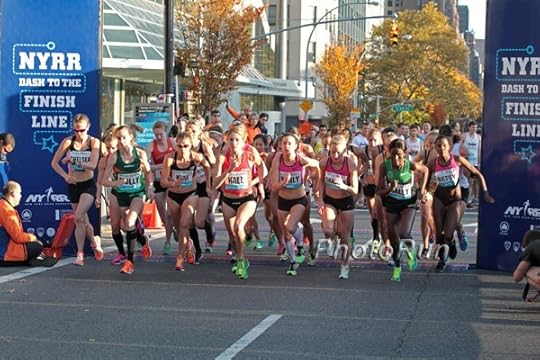 NYRR Dash To The Finish 5K
NYRR Dash To The Finish 5KThe elite women started a few minutes before the men. Photo: PhotoRun.net
View Larger Image.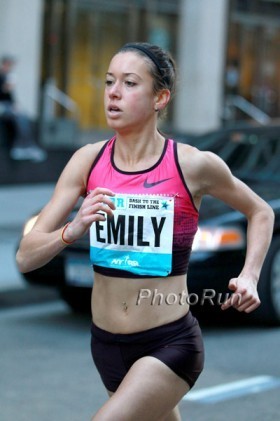 NYRR Dash To The Finish 5K
NYRR Dash To The Finish 5KEmily Infeld was the runner-up in 15:27. Photo: PhotoRun.net
View Larger Image.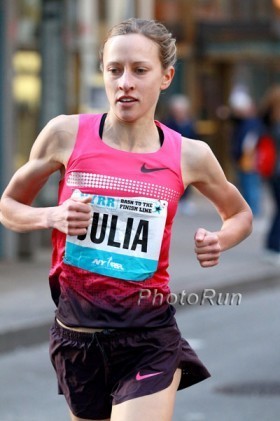 NYRR Dash To The Finish 5K
NYRR Dash To The Finish 5KJulia Bleasdale finished fifth in 15:50. Photo: PhotoRun.net
View Larger Image.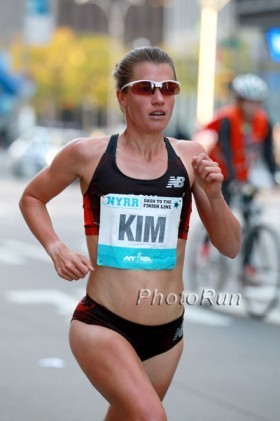 NYRR Dash To The Finish 5K
NYRR Dash To The Finish 5KOlympian Kim Conley finished sixth in 15:55. Photo: PhotoRun.net
View Larger Image.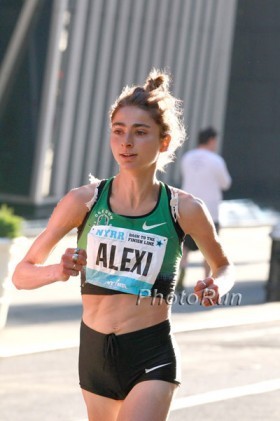 NYRR Dash To The Finish 5K
NYRR Dash To The Finish 5KAlexi Pappas was 12th in 16:23. Photo: PhotoRun.net
View Larger Image. NYRR Dash To The Finish 5K
NYRR Dash To The Finish 5KHuddle, left, Infeld, center, and Flanagan, right, run together mid-race. Photo: PhotoRun.net
View Larger Image.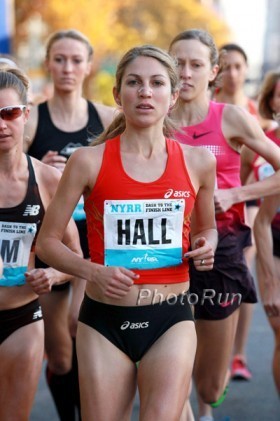 NYRR Dash To The Finish 5K
NYRR Dash To The Finish 5KSara Hall finished 8th in 16:08. Photo: PhotoRun.net
View Larger Image.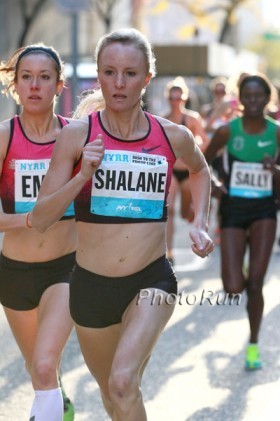 NYRR Dash To The Finish 5K
NYRR Dash To The Finish 5KShalane Flanagan forced the early pace in the women's race. Photo: PhotoRun.net
View Larger Image.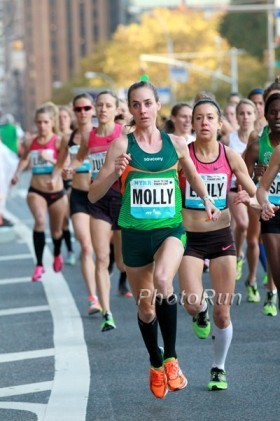 NYRR Dash To The Finish 5K
NYRR Dash To The Finish 5KMolly Huddle leads Emily Infeld. Photo: PhotoRun.net
View Larger Image.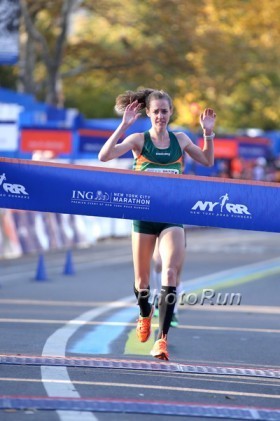 NYRR Dash To The Finish 5K
NYRR Dash To The Finish 5KMolly Huddle breaks the tape in a course record 15:27. Photo: PhotoRun.net
View Larger Image. NYRR Dash To The Finish 5K
NYRR Dash To The Finish 5KAlistair Cragg forces the pace in the men's race. Photo: PhotoRun.net
View Larger Image.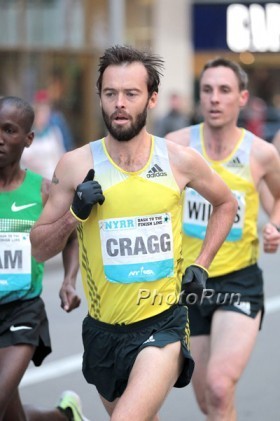 NYRR Dash To The Finish 5K
NYRR Dash To The Finish 5KIrishman Alistair Cragg forced the pace for much of the race and finished fifth in 13:56. Photo: PhotoRun.net
View Larger Image.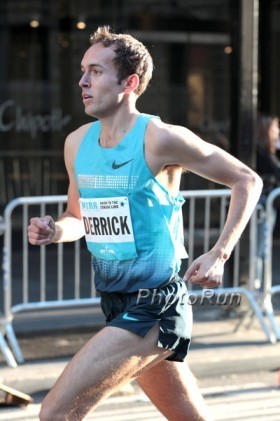 NYRR Dash To The Finish 5K
NYRR Dash To The Finish 5KChris Derrick was 9th in 14:00. Photo: PhotoRun.net
View Larger Image.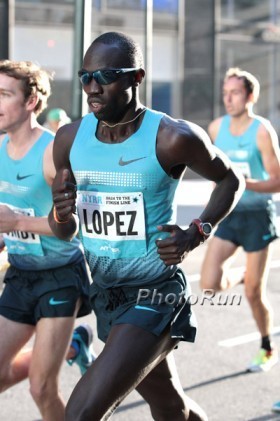 NYRR Dash To The Finish 5K
NYRR Dash To The Finish 5KLopez Lomong finished sixth in 13:58. Photo: PhotoRun.net
View Larger Image. NYRR Dash To The Finish 5K
NYRR Dash To The Finish 5KRunners run past Radio City Music Hall. Photo: PhotoRun.net
View Larger Image. NYRR Dash To The Finish 5K
NYRR Dash To The Finish 5KDavid Torrence was 4th in 13:54. Photo: PhotoRun.net
View Larger Image.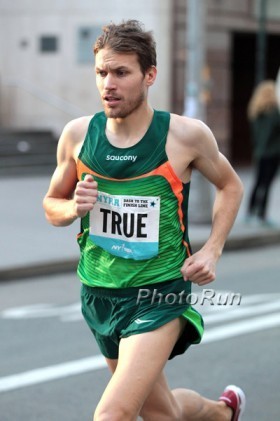 NYRR Dash To The Finish 5K
NYRR Dash To The Finish 5KBen True finished 7th in 13:58. Photo: PhotoRun.net
View Larger Image.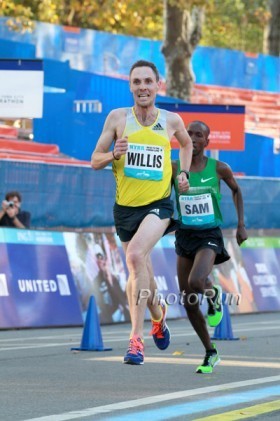 NYRR Dash To The Finish 5K
NYRR Dash To The Finish 5KNick Willis passed Sam Chelanga with just 15 meters to go in the race. Photo: PhotoRun.net
View Larger Image. NYRR Dash To The Finish 5K
NYRR Dash To The Finish 5KNick Willis outkicked Sam Chelanga to win in 13:46. Photo: PhotoRun.net
View Larger Image.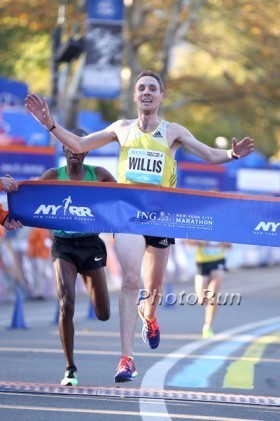 NYRR Dash To The Finish 5K
NYRR Dash To The Finish 5KNick Willis, 13:46. Photo: PhotoRun.net

RACE STORY: Willis, Huddle Capture Dash 5K Titles
The post Photos: NYRR Dash To The Finish 5K appeared first on Competitor Running.
New York City Marathon Will Be Hard To Watch For Ryan Hall

Ryan Hall will not be among the millions of spectators watching Sunday's ING Ne.netw York City Marathon. Photo: PhotoRun.net
The injured marathoner believes he’ll be back up to speed soon.
When the 43rd edition of the ING New York City Marathon goes off on Sunday morning, Ryan Hall won’t be among the millions of spectators watching.
“No, I can’t watch a race I was supposed to run,” he said Friday after running with a group of ASICS-sponsored editors on a shakeout run through Central Park.
RELATED: NYC Marathon To Be Broadcast Live On ESPN
Hall’s scratch from this year’s five-borough race comes after he DNS’d at Boston earlier this year. That follows his DNF in the 2012 London Olympic marathon, and a withdrawal from last year’s New York race, which was ultimately cancelled. All of these resulted from a series of relatively small injuries to his foot and leg that were significant enough to prevent him from training at a level that would allow him to compete with some of best in the world, which he accomplished with a five-year string of two world class-marathons a year through 2011.
“I had plantar fasciitis, which I basically trained through leading up to the Trials,” he said. “Then my hamstring started bothering me before London, possibly because I was altering my stride due to the plantar.
“Then a tore one quad, again from compensating, and now the other one. It’s frustrating.”
MORE: 2013 New York City Marathon Coverage
After his latest setback, Hall has made it a point to spend more time in the weight room, concentrating on his legs to achieve better balance between his hamstrings and quads. He’s also doing easy distance runs to build an aerobic base before doing any sort of quality work as part of a spring marathon buildup.
Not in the cards is a return to Italian coach Renato Canova, who advised Hall late last year. “That didn’t really work out,” said Hall. “I think for a coach to help, he’s got to be right there, seeing how you look while you run, what your stride looks like. The distance thing just doesn’t work for me.”
Nor does he see himself working with any other coach in the future. “I think I’ve learned so much in my career that getting a coach would just be a step backward,” he said.
Hall also seems resigned to the fact that primarily solo training will remain his method in the future, unless an unanticipated change in his living arrangements occurs. “I’m pretty much committed to Redding [Calif.] and Flagstaff,” he said. “There aren’t many people there I can train with, and I don’t think they’re going to move there to run with me.”
Nonetheless, Hall, ever the optimist, with a rock-solid faith in God as an underpinning for his running, feels he’ll be back, hopefully as soon as next spring, intimating that he still has some unfinished business in Boston, in spite of several podium finishes including his American best (but not record) 2:04:58 in 2011.
“I haven’t had really big, career-threatening injuries, just ones that kept me from being 100 percent on race day. If I can stay healthy, I’ll be right back.”
The post New York City Marathon Will Be Hard To Watch For Ryan Hall appeared first on Competitor Running.
Ryan Hall's Blog
- Ryan Hall's profile
- 21 followers



